
Africoid Involvement in Asian Spirituality


Asia has long been home to ancient Africoid cultures
and peoples. The word Africoid here refers to those native inhabitants of Asia whose phenotype closely resembles that of Africans. Asia's Africoid populations include such groups as the Dravidians of India and various peoples of Southeast Asia and the South Seas referred to as Melanasians, Oceanic Negroids, Negritos, Australoids and more. Though many of these peoples were once designated a name which
indicates an association with Black Africans, in recent years anthropology has changed its position on their racial categorization. Most modern researchers have concluded that though these Africoid populations of Asia share a phenotypic similarity with Black Africans, they share genetic similarities moreso with other
Asians. Thus they are often classified as Asian racial sub groups. Such classifications have led to controversy over the very definition of the notion of "race." Is it determined by genotype or phenotype? Where does the "Black" race, being the oldest, begin and end? The answers to these questions have yet to be resolved. At any rate this page hopes to give a brief glimpse of the involvement of Africoid Asian populations in some of the major spiritual movements on the continent. |
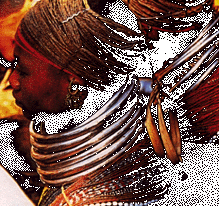
India has a rich history that spans back thousands of years. Western historians and anthropologists alike have termed some of its earliest inhabitants as Ethiopoids, Australoids, Hamitic, Eurafricans etc. A branch of these early inhabitants, who it seems have occupied the area longer than any other group, are called Dravidians. These peoples are believed to have been the founders of the two ancient Indus Valley cities of Harrapa and Mohenjo-Daro which reached their heights around 2200BC. No one knows exactly how and why these cultural complexes declined. Some have proposed the Aryan theory. This theory contends that highly patriarchal, aggressive and warlike nomadic white tribes known as Aryans, "the noble ones," swept down into the Indus Valley region some 3,500 years ago. The darker inhabitants of India were no strangers to combat, but the Aryans studied warfare and glorified battle. After centuries of conflict, they were victorious naming the region Aryavarta, "the Aryan Land." Modern Indian scholars have balked at this notion of an Aryan army "sweeping down and driving the Dravidian populations before them." Rather they assert that the so-called Aryan types were northern populations who steadily migrated into India where they found the Indus Valley complexes already in decline. Pictured is one of these black types that have existed in India for millennia, the Bonda. (Photo and Information courtesy of National Geographic Magazine, African Presence in Early Asia and India in History)
|
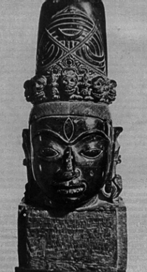 | If true differences existed between the oldest inhabitants of India and their fair-skinned northern neighbors, it is no doubt in the area of deification. Prior to Hinduism's existence in India, the early Africoid inhabitants are known to have a host of deities. An agricultural people, their deities were mostly those of the earth and were heavily female. In contrast, their northern neighbors were known for their male gods of thunder and of the sky. It is thought such a difference reflects the more nomadic ways of the northern tribes who, without permanent shelter, were very dependent upon the weather. After the Aryan incursions/migrations into the south, the deities of both groups merged to form what is today Hinduism. But the early Africoid inhabitants were to find a drastic difference in their spiritual beliefs. Firstly their new neighbors, favoring male deities, gave more masculine deities greater prominence. Thus deities which gained great favor in the south, such as Maya, were replaced with more masculine types. Pictured here is a lingham, a fertility symbol associated with Maya, with clear Africoid features. (Photo and Information courtesy of African Presence in Early Asia and India in History)
|
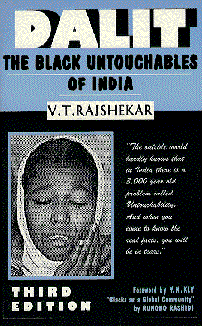
Either by migration or violent incursion, the effect of these northern tribes upon their darker neighbors was spiritually detrimental. An hierarchal system, Varna, (meaning color) was instituted by the ruling class of fairer-skinned northern nomads placing them at the top and darker skinned peoples at the bottom. Today this rigid socio-religous code is called the caste system. Cruel and harsh, this caste system controlled every aspect of daily life. It was written, "A Sudra (Black) who insults a twice-born man (white), shall have his tongue cut out. If he mentions the names and castes of the (twice-born) with contempt, an iron nail, ten fingers long, shall be thrust into his mouth. If he spits on a twice-born both his lips shall be cut off; if he urinates on him, the penis; if he breaks wind, the anus." This color-orientated social order became an integral part of the newly formed Hinduism. Even beneath these were the Outcastes. Despised as Untouchables and labeled as the physical manifestation of sin, they were forced to live outside communities, they ate from broken dishes and gained their clothes from corpses. They were made to practice humiliating acts such as attaching a cup to their chins to catch offensive spittle, and walking with a broom to sweep away signs of their pollutive passing. Today India is a virtual melting pot. The Africoid and Caucasian phenotypes have given way to a type more fitting of modern Indians. Even many Dravidians are hard to distinguish. But there still exist many Africoid types which live within India. The castes are mixed to a certain degree, thus color of skin is no longer a definitive description of a lower caste member.
However one such group of Outcastes, the Dalits, have in recent decades strongly advocated a "Black African" connection to their roots. One of their most prominent spokesman is the Indian scholar, VT Rajeshekar. Pictured above is his work, Dalit: The Black Untouchables of India. (Photo and Information courtesy of Africans in Early Asiaed. by Ivan Van Sertima and Dalit: The Black Untouchables of India by VT Rajshekar)
|
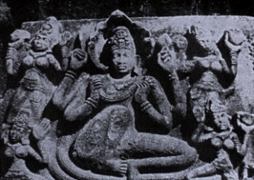
A good example of these Africoid types which inhabited early India can be learned from the artifacts of the region. More than a few depict figures not only black in color, but Africoid in phenotype. Pictured above is a statue of the Hindu god Vishnu. One of his incarnations, Krishna, is often painted either blue or black. Among some Dalits and other Indians who declare a Black heritage, he is considered a heroic legendary prince of Sudra origins who helped break an era of "Aryan" dominance. Another incarnation of Vishnu was the Buddha whose Hindu-reformist movement became known as Buddhism. As with the Hindu deities, a significant amount of Africoid featured Buddhas exist in Southern India and especially Southeast Asia. (Photo and Information courtesy of
Dalit: The Black Untouchables of India by VT Rajshekar and World Archaeology)
|
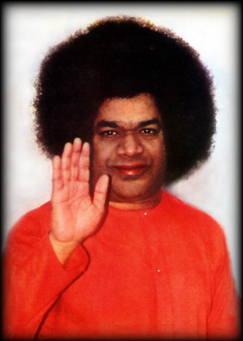
Pictured above is Sathya Sai Baba , a highly revered spiritual leader and world teacher of Dravidian ancestry. He has a following of millions world wide, with bases of contact on 6 continents. Sathya Sai Baba publicly declared his mission in 1940, at the age of 14. His followers believe he has daily exhibited in practical and concrete terms the highest ideals of truth, right conduct, peace, love, and nonviolence. He has often stated, "My life is my message." Each day, hundreds of pilgrims make their way to the tiny hamlet in southern India where Sathya Sai Baba's ashram (spiritual headquarters) is located. As stated they come not only from India but from virtually every country of the world. (Photo courtesy of On Sai Ram website and African Presence in Early Asia ed. by Ivan Van Sertima)
|

China and Southeast Asia
In Early Asia

Early Chinese legends relate traditions of divine dynasties such as the Epoch of the Five Emperors. According to JA Rogers, the first Chinese Emperor, known as Fu-Hsi/Fu-he (2953-2838BC) is described as a "wooly-haired Negro." Whether this was actually the case with this semi-legendary figure, we do not know. But the existence of black types in the region since the most remote times is known. Quite a few Chinese of the period wrote of "Black Dwarfs" with whom they shared the region. According to Chinese archaeologist Kwang-chih Chang, early skulls found in Southern China bore evidence of "Oceanic Negroid" types. He goes on to state that as early as 221BC (the Chin Dynasty), "Negritos whom the Chinese call 'Black Dwarfs' are reported in the mountainous districts south of the Yangtze." Pictured above is a Shang Dynasty drinking vessel made of bronze with an Africoid type figure in a tiger's mouth. The piece is most likely of spiritual significance. Of interest is what role did these Africoid types play in early Chinese spirituality? (Photo and Information courtesy of The African Presence in Early Asia ed. by Runoko Rashidi and Ivan Van Sertima and Chinese Art by Mary Tregear) |
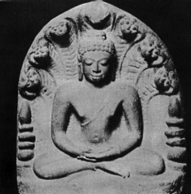
Buddhism arose as a type of reformist Hinduism, doing away with the caste system and teaching enlightenment for all. A Hindu prince is said to be the first physical incarnation of Buddha. But the idea of Buddha predates his physical existence. The Buddha was the 9th avatar of the Hindu deity Vishnu. Of note is that Buddha was said to be born of a virgin, adding him to the worldwide list of immaculately conceived deities. Buddha seem to come in various phenotypes including Africoid. These Black featured Buddha are found predominantly in Southern India and Southeast Asia, known areas of strong Africoid populations. It is also of note that Bodidharma, founder of Zen Buddhism, was said to be a Dravidian. Pictured above is an Africoid featured Buddha from Southeast Asia complete with curly hair and surrounding nagas. (Photo and Information courtesy of The Image of the Buddha and Man, God and Civilization)
|












![]()